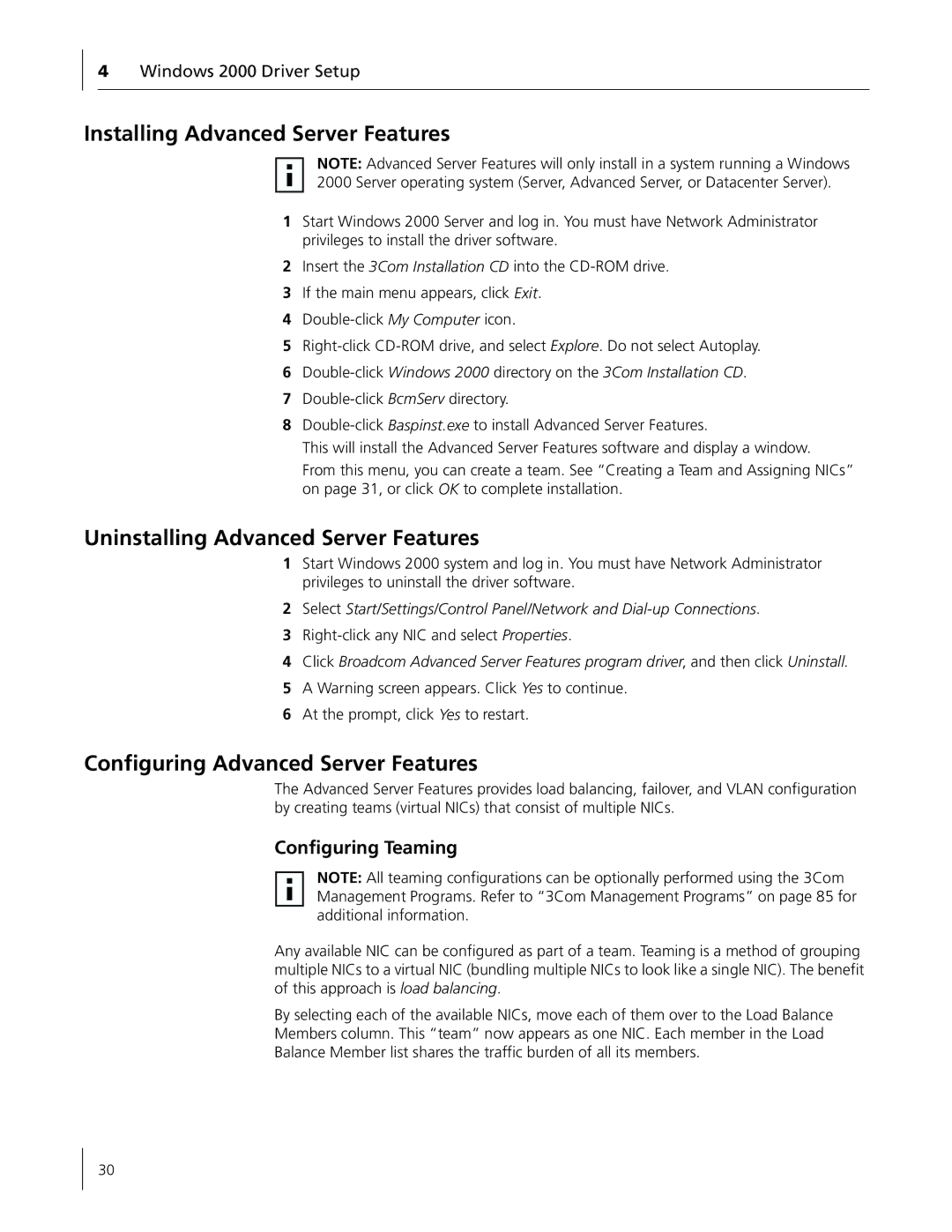
4Windows 2000 Driver Setup
Installing Advanced Server Features
NOTE: Advanced Server Features will only install in a system running a Windows 2000 Server operating system (Server, Advanced Server, or Datacenter Server).
1Start Windows 2000 Server and log in. You must have Network Administrator privileges to install the driver software.
2Insert the 3Com Installation CD into the
3If the main menu appears, click Exit.
4
5
6
7
8
This will install the Advanced Server Features software and display a window.
From this menu, you can create a team. See “Creating a Team and Assigning NICs” on page 31, or click OK to complete installation.
Uninstalling Advanced Server Features
1Start Windows 2000 system and log in. You must have Network Administrator privileges to uninstall the driver software.
2Select Start/Settings/Control Panel/Network and
3
4Click Broadcom Advanced Server Features program driver, and then click Uninstall.
5A Warning screen appears. Click Yes to continue.
6At the prompt, click Yes to restart.
Configuring Advanced Server Features
The Advanced Server Features provides load balancing, failover, and VLAN configuration by creating teams (virtual NICs) that consist of multiple NICs.
Configuring Teaming
NOTE: All teaming configurations can be optionally performed using the 3Com Management Programs. Refer to “3Com Management Programs” on page 85 for additional information.
Any available NIC can be configured as part of a team. Teaming is a method of grouping multiple NICs to a virtual NIC (bundling multiple NICs to look like a single NIC). The benefit of this approach is load balancing.
By selecting each of the available NICs, move each of them over to the Load Balance
Members column. This “team” now appears as one NIC. Each member in the Load
Balance Member list shares the traffic burden of all its members.
30
